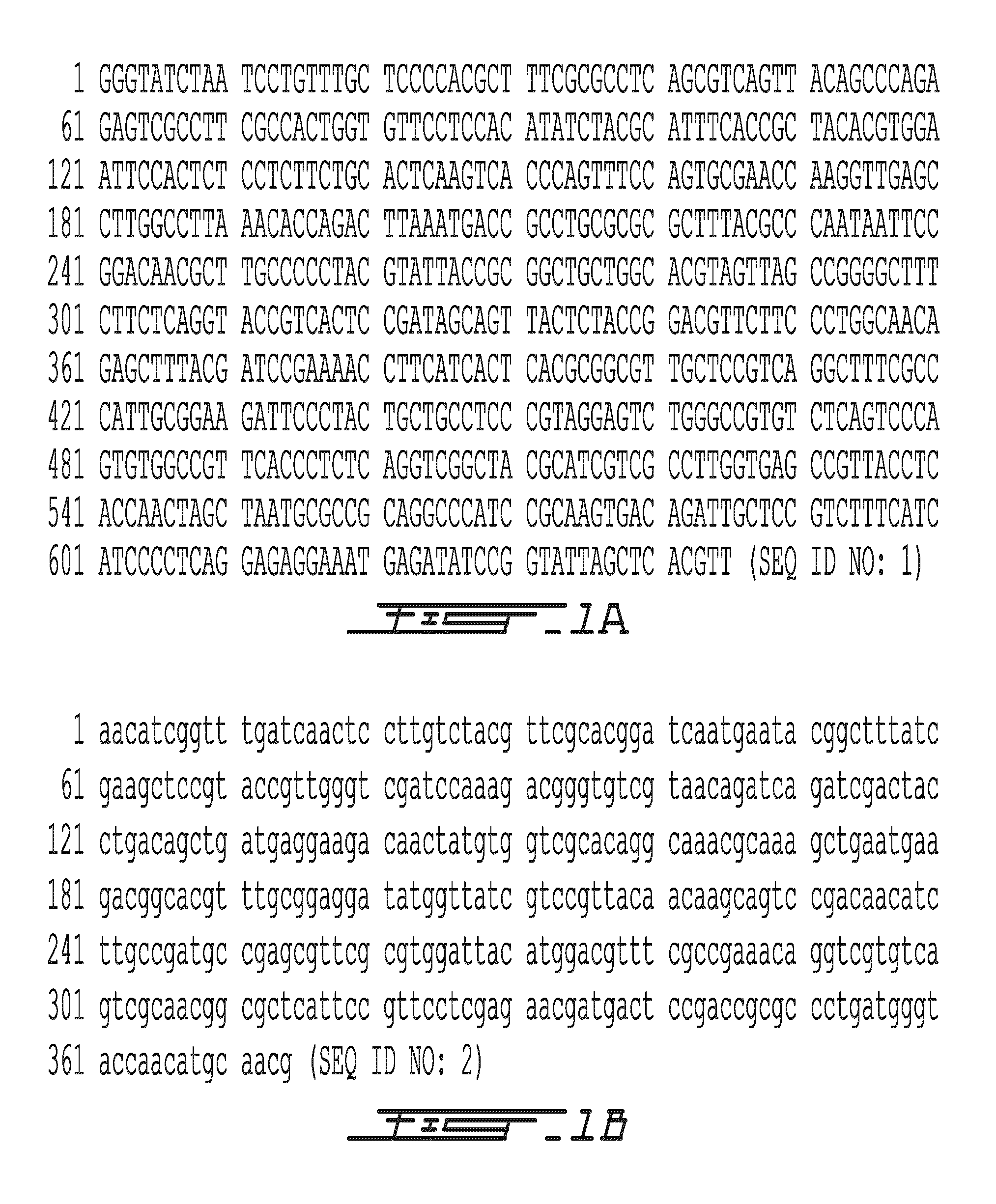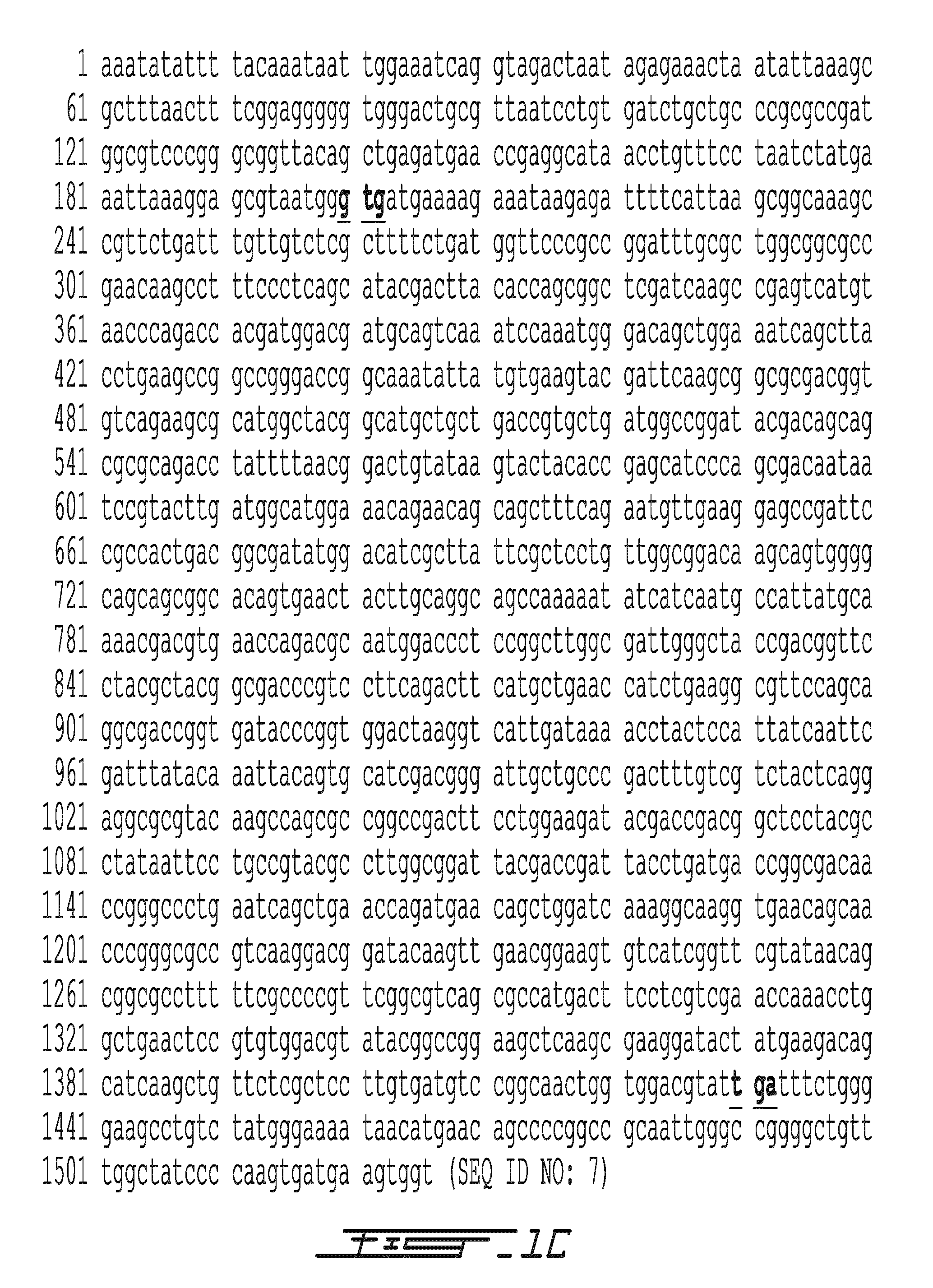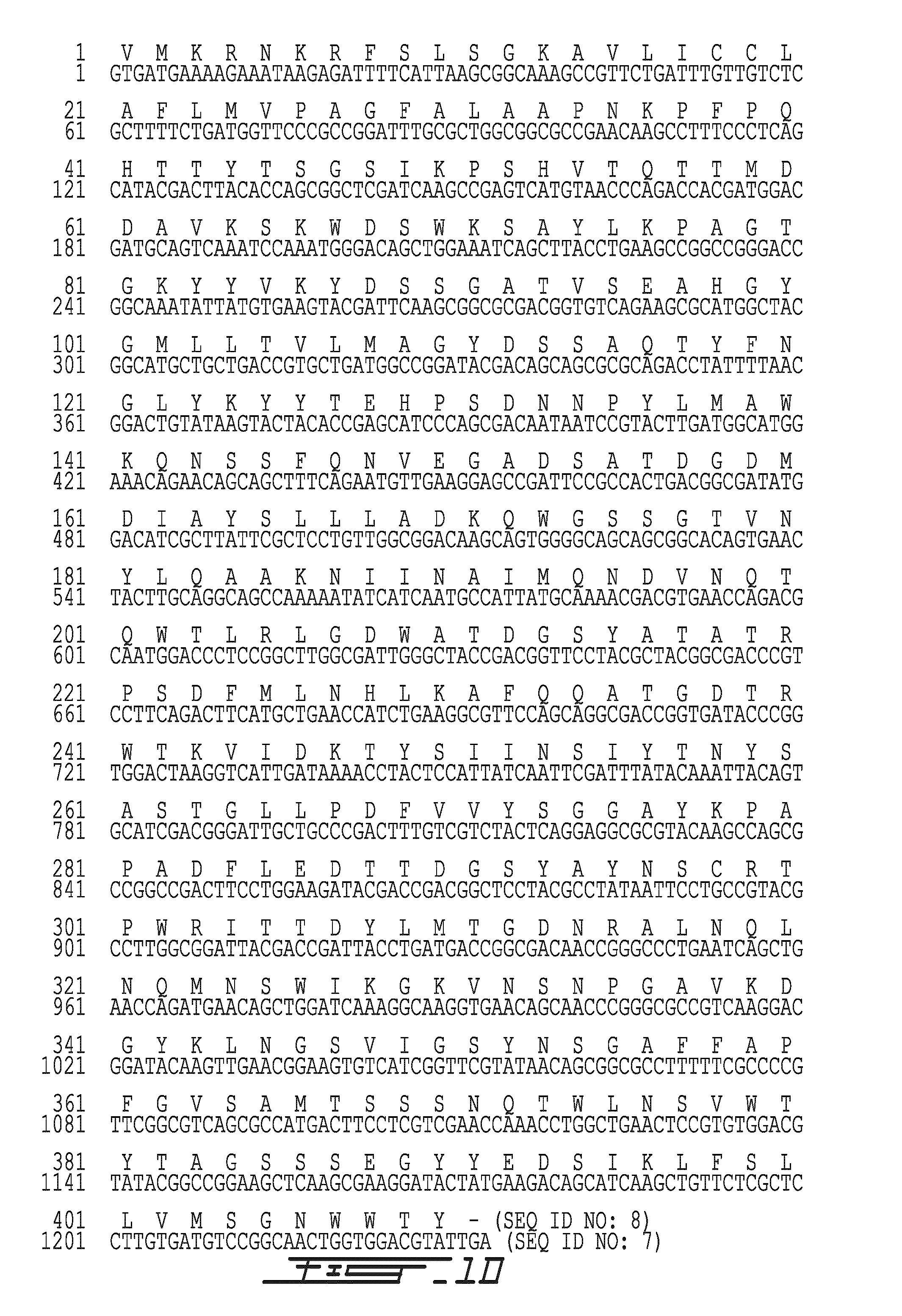Thermostable chitosanase
a technology of chitosanase and chitosanase, which is applied in the field of thermostable chitosanase, can solve the problems of limited application to basic laboratory research, unusable natural sources, and little control of the molecular weight of the final produ
- Summary
- Abstract
- Description
- Claims
- Application Information
AI Technical Summary
Benefits of technology
Problems solved by technology
Method used
Image
Examples
example i
Isolation and Characterization of Bacteria Producing Thermostable Chitosanase
[0066]In order to find a microorganism producing a thermostable chitosanase enzyme which could be used for large-scale production of low molecular weight chitosans (LMWC) or of chitooligosaccharides (CHOS), different types of composts were screened. Among about two thousands of microbial isolates, the isolate 1794 (also referred to as strain 1794) was selected as the strain producing the chitosanase with the highest thermostability following a multi-step screening and selection procedure involving micro-plate assays of chitosanase activity at various temperatures.
[0067]The screening was first performed on a compost material based on shrimp shells and peat, using the following procedure. Eight (8) g of compost (wet weight) were combined with 1 g of chitosan (Sigma) flakes and thoroughly mixed. The mix (compost and chitosan) was wetted with a salt-buffer solution containing Bushnell Haas salts (3.27 g / l) and ...
example ii
Chitosanase Characterization
[0070]Chitosanase production was increased by the 1794 isolate when a medium containing oligomeric chitosan derivatives as carbon source was used. A 12 h to 18 h of Paenibacillus sp. 1794 pre-culture was prepared by inoculation of a loop of this strain into Tryptic soy broth (Difco) and incubation with shaking (300 rpm) for 14 to 18 h at 45° C. The chitosanase production medium was then prepared as follows. First, a 2.5-times concentrated base medium was obtained by dissolving in distilled water: peptone (12.5 g / L), K2SO4 (2.5 g / L), K2HPO4 (12.5 g / L), MgSO4 (2.5 g / L). NaCl (0.25 g / L), CaCl2 (400 mg / L), FeSO4 (25 μM), and 0.5 ml of microelements solution (ZnSO4*7H2O, 1 g / L; MnCl2*4H2O, 1 g / L). This concentrated base medium was sterilized by autoclaving. Final pH after sterilization was around 6.5, usually without further adjustment. Separately, sucrose, chitosan oligosaccharides and D-glucosamine solutions in distilled water (each concentrated at 100 g / L) ...
example iii
Sequence Determination of Csn1794
[0088]Chromosomal DNA was extracted from Paenibacillus sp. 1794 using a method involving lysozyme-aided cell lysis. RNAse and Proteinase K treatment.
[0089]A DNA probe suitable for the identification of the DNA fragment carrying the csn1794 gene was identified by a reverse genetics approach as follows. The purified Csn1794 protein was digested into short peptides with trypsin and the sequence of several peptides has been determined. Based on the sequence of two peptides (N terminus-K W N S W K-C terminus (SEQ ID NO: 3) and N terminus-T T D Y L M-C terminus (SEQ ID NO: 4)), two synthetic oligonucleotide primers have been designed according to the principle of reverse translation:
(SEQ ID NO: 5)Primer 1: 5′-AAATGGAACAGCTGGAAA-3′(SEQ ID NO: 6)Primer 2: 5′-CATCAGATAGTCGGTCGT-3′
[0090]A polymerase chain reaction has been set up with these two primers, allowing to amplify a 648-base pairs DNA fragment, representing an internal segment of the csn1794 gene codi...
PUM
| Property | Measurement | Unit |
|---|---|---|
| optimal temperature | aaaaa | aaaaa |
| temperature | aaaaa | aaaaa |
| temperature | aaaaa | aaaaa |
Abstract
Description
Claims
Application Information
 Login to View More
Login to View More - R&D
- Intellectual Property
- Life Sciences
- Materials
- Tech Scout
- Unparalleled Data Quality
- Higher Quality Content
- 60% Fewer Hallucinations
Browse by: Latest US Patents, China's latest patents, Technical Efficacy Thesaurus, Application Domain, Technology Topic, Popular Technical Reports.
© 2025 PatSnap. All rights reserved.Legal|Privacy policy|Modern Slavery Act Transparency Statement|Sitemap|About US| Contact US: help@patsnap.com



